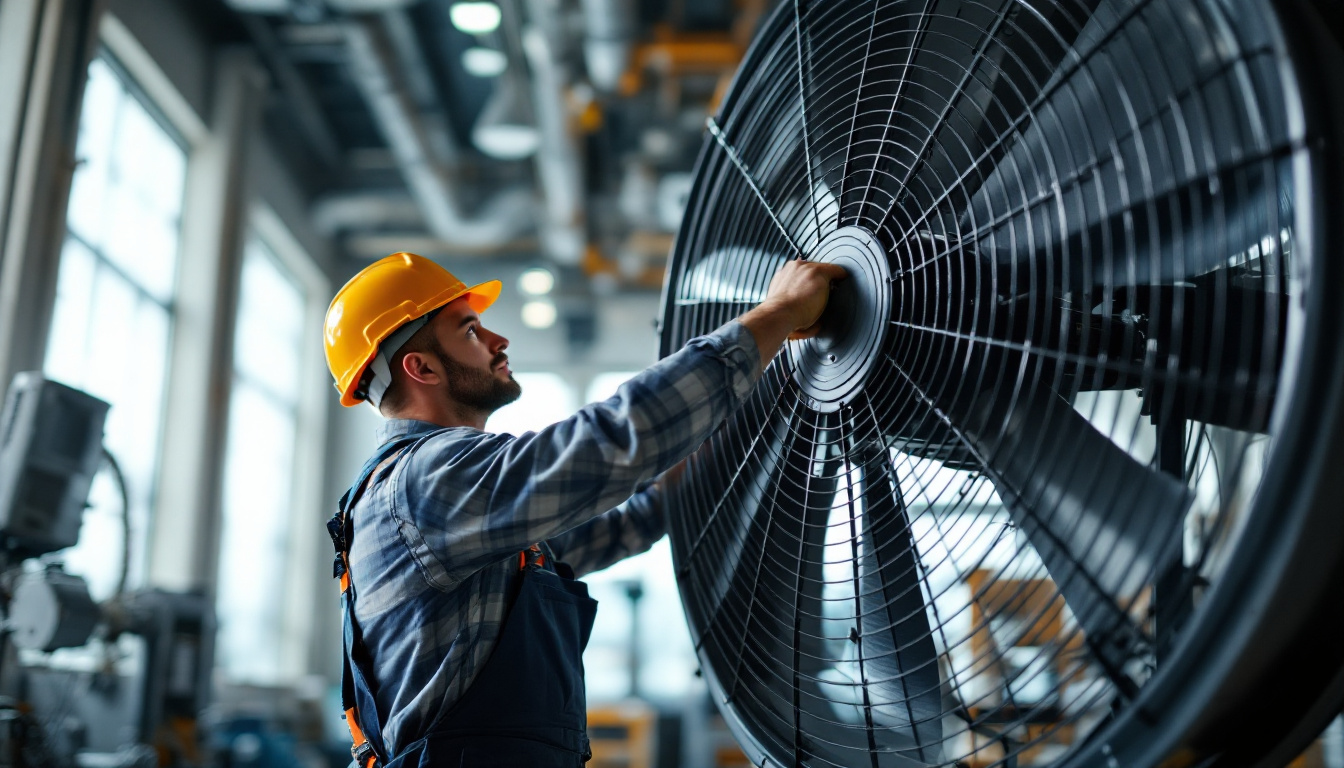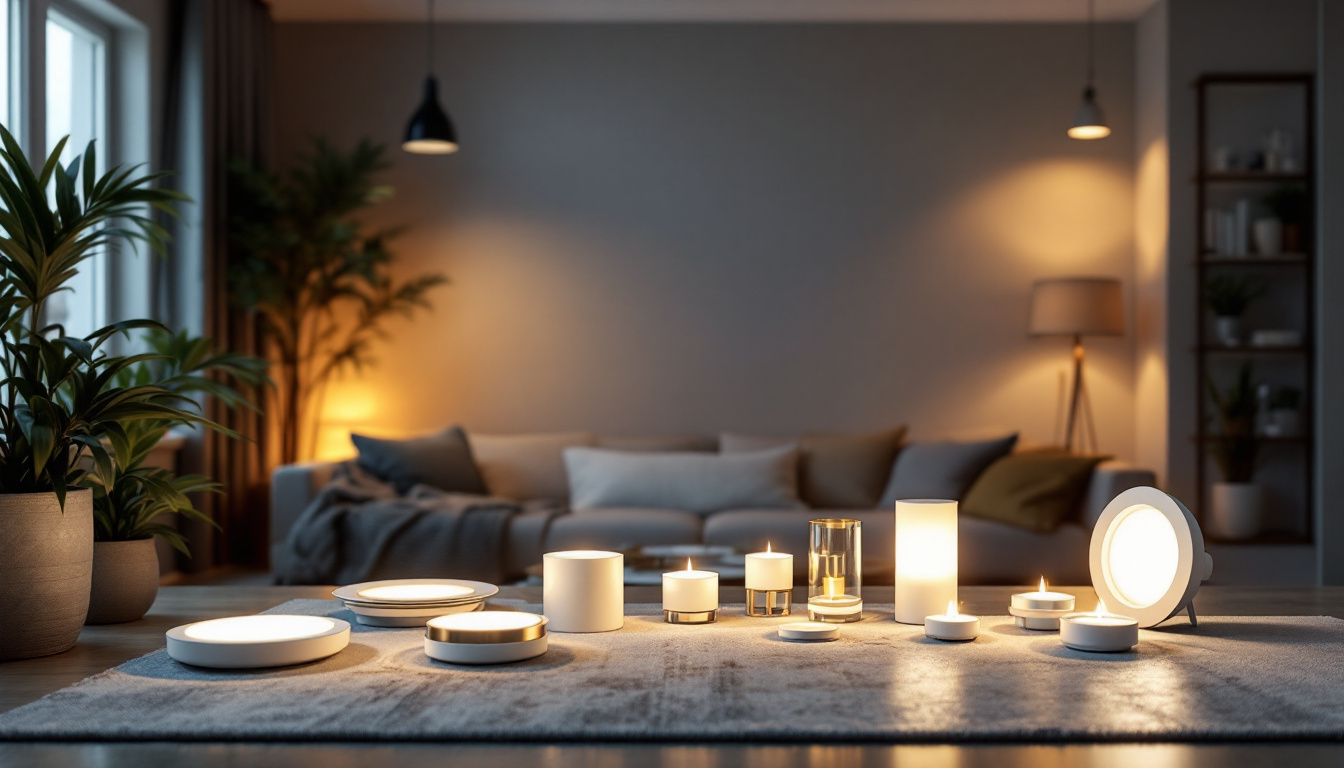
In the world of lighting contracting, understanding the tools and equipment available can significantly impact project outcomes. Among these tools, industrial large fans play a crucial role in various applications, from improving air circulation to enhancing the effectiveness of lighting installations. This article delves into essential facts about industrial large fans that every lighting contractor should know.
Industrial large fans are designed to move large volumes of air efficiently and effectively. These fans are commonly used in warehouses, manufacturing facilities, and other large spaces where ventilation is critical. Their primary purpose is to improve air quality, regulate temperature, and create a comfortable working environment.
There are several types of industrial large fans, each suited for specific applications. The most common types include axial fans, centrifugal fans, and mixed-flow fans. Understanding the differences between these types can help contractors select the right fan for their projects.
Axial fans are designed to move air along the axis of the fan. They are typically used for ventilation in large spaces due to their ability to move high volumes of air at low pressure. Centrifugal fans, on the other hand, draw air into the fan and then expel it at a 90-degree angle. These fans are ideal for applications requiring higher pressures, such as dust collection systems. Mixed-flow fans combine features of both axial and centrifugal fans, offering versatility for various settings.
When selecting an industrial large fan, several key features should be considered. First, the fan’s size and airflow capacity are critical. The airflow capacity is usually measured in cubic feet per minute (CFM), and it is essential to choose a fan that can adequately ventilate the space in question.
Another important feature is the fan’s energy efficiency. With rising energy costs and increasing environmental concerns, selecting an energy-efficient fan can lead to significant savings over time. Additionally, noise levels should be taken into account, especially in environments where noise pollution can disrupt operations.
Moreover, the construction materials of the fan play a vital role in its durability and performance. Fans made from corrosion-resistant materials, such as stainless steel or high-grade plastics, are ideal for environments that may expose them to moisture or chemicals. Additionally, the design of the fan blades can greatly influence airflow patterns and efficiency. Blades that are aerodynamically designed can enhance performance, allowing for better air movement while consuming less energy.
Finally, maintenance requirements should also be a consideration. Some fans come with features that facilitate easy cleaning and maintenance, which can prolong the fan’s lifespan and ensure optimal performance. Regular maintenance not only helps in preventing breakdowns but also ensures that the fan operates at peak efficiency, contributing to a healthier and more productive environment.
In lighting projects, the integration of industrial large fans can enhance both the functionality and aesthetics of the space. Proper air circulation can improve the performance of lighting systems, ensuring that they operate at optimal levels while maintaining a comfortable environment for workers.
Industrial large fans can help maintain the ideal temperature in spaces where lighting systems are installed. Excess heat generated by lighting fixtures can lead to decreased efficiency and increased energy consumption. By improving air circulation, large fans help dissipate this heat, allowing lighting systems to operate more effectively.
Moreover, maintaining a stable temperature can prolong the lifespan of lighting fixtures. This is particularly important for high-intensity discharge (HID) and LED lights, which can be sensitive to temperature fluctuations. By ensuring optimal operating conditions, contractors can reduce the frequency of replacements and maintenance, leading to cost savings in the long run.
In addition to temperature regulation, industrial large fans can also assist in distributing light more evenly throughout a space. By creating a gentle airflow, these fans can minimize shadows and enhance the overall illumination, making areas feel brighter and more welcoming. This is especially beneficial in large warehouses or retail environments where consistent lighting is crucial for both safety and aesthetics. The strategic placement of large fans can thus complement the lighting design, ensuring that every corner of the space is adequately lit.
In addition to improving efficiency, industrial large fans contribute to the overall safety and comfort of a workspace. Proper ventilation reduces the risk of overheating and helps prevent the buildup of harmful gases or fumes, which can be particularly relevant in industrial settings.
Furthermore, a comfortable working environment can enhance productivity. Employees are more likely to perform at their best when they are not distracted by heat or humidity. By incorporating industrial large fans into lighting projects, contractors can create spaces that promote both safety and productivity.
Moreover, the noise levels associated with industrial fans have significantly decreased with advancements in technology. Modern large fans are designed to operate quietly, ensuring that they do not disrupt the work environment. This is particularly important in settings where concentration is key, such as in design studios or research labs. The ability to maintain a cool, comfortable atmosphere without the distraction of loud machinery can greatly enhance the overall work experience, allowing employees to focus on their tasks without unnecessary interruptions.
Installing industrial large fans requires careful planning and execution. Proper installation ensures that the fans operate efficiently and effectively, maximizing their benefits. Lighting contractors should consider the following factors during the installation process.
The placement and orientation of industrial large fans are crucial for optimal performance. Fans should be strategically positioned to ensure even air distribution throughout the space. This often involves analyzing the layout of the area and identifying potential obstacles that could impede airflow.
In some cases, it may be beneficial to install multiple fans to achieve the desired airflow. Contractors should also consider the direction of airflow, as this can impact the overall effectiveness of the ventilation system. Proper orientation can help direct air toward areas where it is most needed, enhancing the overall comfort of the space.
Maintaining industrial large fans is essential for ensuring their longevity and efficiency. Regular maintenance practices should include cleaning the fan blades and housing to prevent dust and debris buildup, which can hinder performance. Additionally, checking the fan’s motor and electrical components for wear and tear is critical.
Contractors should also establish a maintenance schedule to ensure that fans are inspected and serviced regularly. This proactive approach can help identify potential issues before they escalate, reducing downtime and repair costs.
As sustainability becomes increasingly important in the construction and contracting industries, energy efficiency is a key consideration when selecting industrial large fans. Many manufacturers now offer fans designed with energy-saving features that can significantly reduce electricity consumption.
Modern industrial large fans often incorporate advanced technologies to enhance energy efficiency. For instance, variable frequency drives (VFDs) allow fans to adjust their speed based on the specific needs of the environment. This means that fans can operate at lower speeds when full airflow is not required, leading to substantial energy savings.
Additionally, many fans are designed with aerodynamic blades that minimize resistance and maximize airflow. This design not only improves efficiency but also reduces noise levels, creating a more pleasant working environment.
By choosing energy-efficient industrial large fans, lighting contractors can contribute to a more sustainable future. Reduced energy consumption translates to lower greenhouse gas emissions, making a positive impact on the environment. Furthermore, many clients are increasingly prioritizing sustainability in their projects, making energy-efficient fans an attractive option.
While the initial investment in industrial large fans may seem significant, it is essential to consider the long-term cost benefits. Energy savings, reduced maintenance costs, and improved productivity can all contribute to a favorable return on investment.
When evaluating the cost of industrial large fans, contractors should consider both the initial purchase price and the potential long-term savings. Energy-efficient models may have a higher upfront cost, but the savings on electricity bills can quickly offset this expense. Additionally, fans that require less maintenance can further reduce costs over time.
Contractors should also factor in the potential for increased productivity and employee satisfaction. A comfortable working environment can lead to improved performance, ultimately benefiting the bottom line.
For contractors looking to invest in industrial large fans, various financing options may be available. Many manufacturers offer financing plans that allow contractors to spread the cost over time, making it easier to manage cash flow. Additionally, some government programs provide incentives for energy-efficient upgrades, further reducing the financial burden.
Industrial large fans are an essential tool for lighting contractors, offering numerous benefits that enhance both the functionality and safety of lighting projects. Understanding the different types of fans, their applications, and maintenance requirements can help contractors make informed decisions that lead to successful project outcomes.
As sustainability and energy efficiency become increasingly important, selecting the right industrial large fan can contribute to a more comfortable and productive working environment while also promoting environmental responsibility. By considering the factors outlined in this article, lighting contractors can effectively integrate industrial large fans into their projects, ensuring optimal performance and satisfaction for their clients.
Ready to elevate your lighting projects with the best industrial large fans on the market? Look no further than LumenWholesale, where we provide contractors with superior spec-grade lighting and ventilation solutions at unbeatable wholesale prices. Our commitment to quality and affordability means you can trust us to supply high-performance industrial large fans that fit seamlessly into your energy-efficient and sustainable projects. Take advantage of our hassle-free bulk buying options and free shipping to get premium products at the best value. Don’t compromise on quality or cost—explore our selection at LumenWholesale and make your next project a resounding success.

Discover the key insights and answers to lighting contractors’ most common questions about replacing PL lamps with 18-watt LED alternatives.

Discover how conversion light kits can transform your recessed lighting for enhanced efficiency and aesthetics.

Illuminate your projects with expert insights! Discover essential tips and innovative strategies for lighting contractors to enhance shop environments, boost efficiency, and create captivating displays..

Discover how partnering with a lighting contractor can illuminate new opportunities for your business.